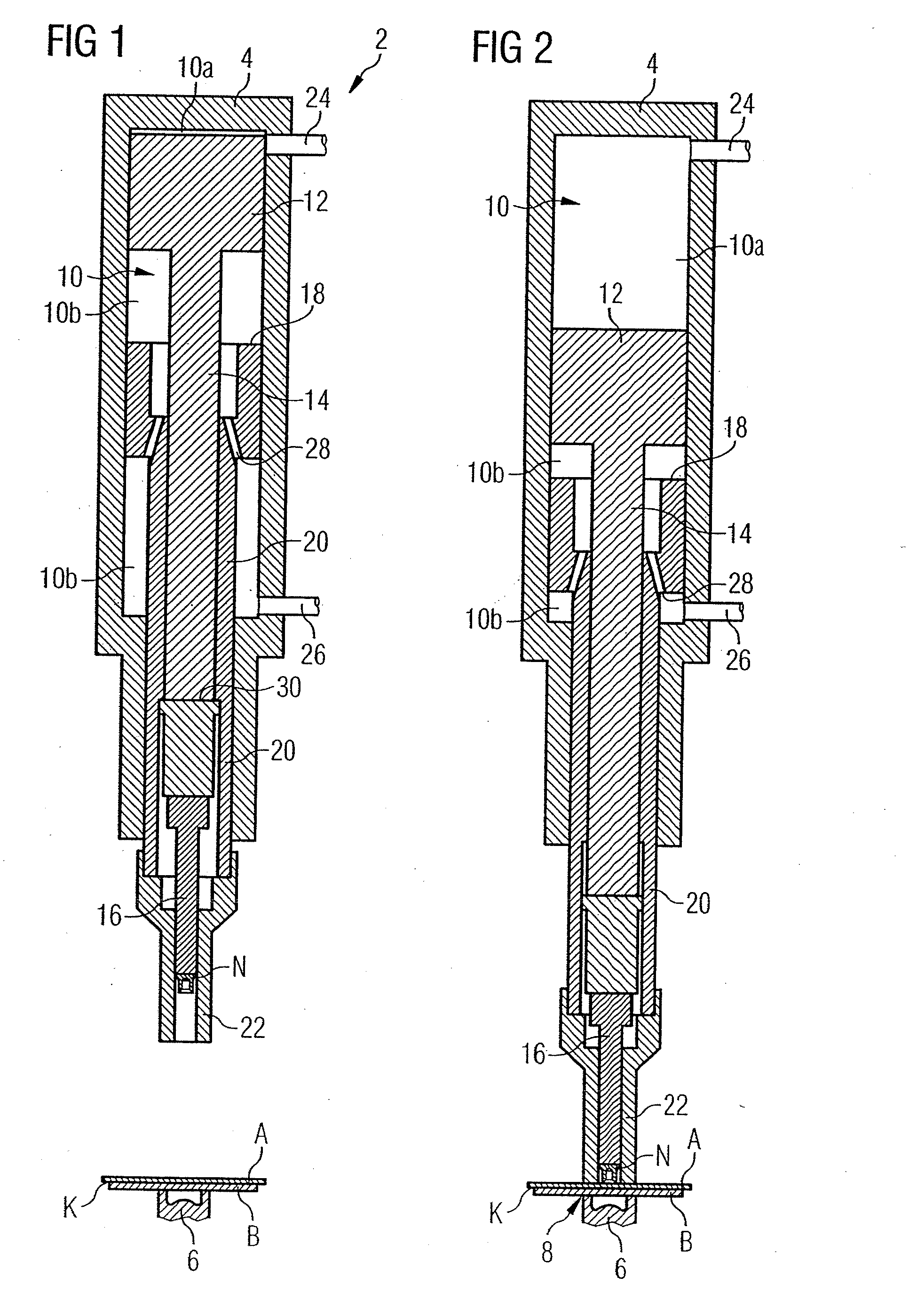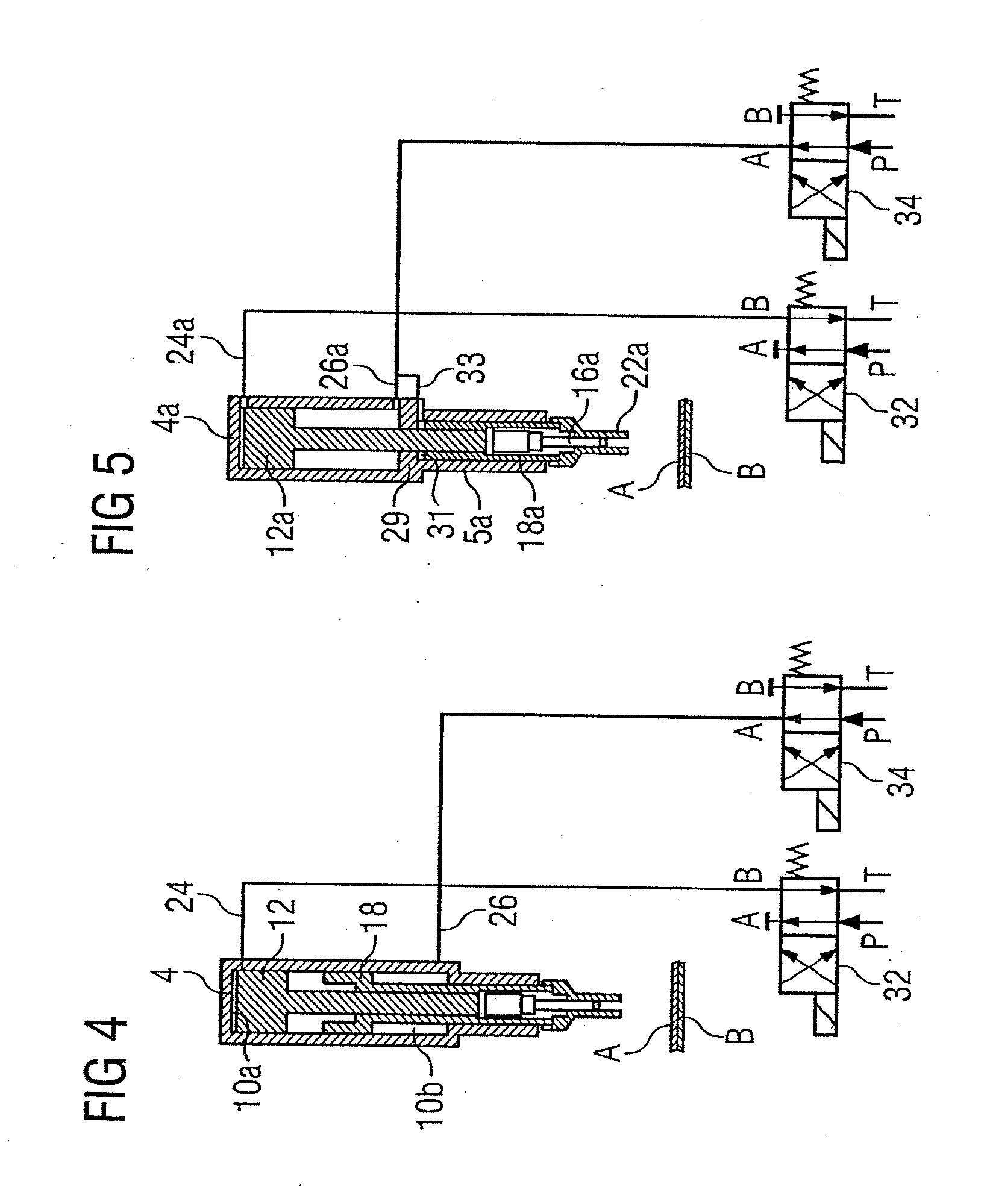Joining Method and a Device for Operating a Fastening Tool
a technology of fastening tool and jointing method, which is applied in the direction of manufacturing tools, couplings, mechanical devices, etc., can solve the problems of high clamping force, detrimental effect, and prior high clamping force, and achieve low structural expenditure, high clamping force, and high punching force
- Summary
- Abstract
- Description
- Claims
- Application Information
AI Technical Summary
Benefits of technology
Problems solved by technology
Method used
Image
Examples
Embodiment Construction
[0027] The fastening tool 2 shown only schematically in the FIGS. 1 to 3 is arranged to make a joint between two (or more) plate-shaped workpieces A and B (metal sheets). In the embodiment as shown the fastening tool 2 is a rivet setting device for setting self-piercing rivets N even though the fastening tool 2 could be another tool such as for example a clinching device. Since self-piercing rivets and self-piercing rivet joints are basically known, they will not be described any further.
[0028] The fastening tool 2 includes a drive comprising a hydraulic cylinder 4, and a die 6, with the workpieces A, B being supported thereagainst. The cylinder 4 is supported on a C-shaped frame (not shown) as is usual in fastening tools of this type.
[0029] The hydraulic cylinder 4 has a cylindrical cavity 10 receiving a main piston 12 with a piston rod 14 so as to be displaceable therein. The piston rod 14 of the main piston 12 is integrally connected to a punch 16 for setting the rivet N.
[0030...
PUM
| Property | Measurement | Unit |
|---|---|---|
| clamping force | aaaaa | aaaaa |
| clamping force | aaaaa | aaaaa |
| punch force | aaaaa | aaaaa |
Abstract
Description
Claims
Application Information
 Login to View More
Login to View More - R&D
- Intellectual Property
- Life Sciences
- Materials
- Tech Scout
- Unparalleled Data Quality
- Higher Quality Content
- 60% Fewer Hallucinations
Browse by: Latest US Patents, China's latest patents, Technical Efficacy Thesaurus, Application Domain, Technology Topic, Popular Technical Reports.
© 2025 PatSnap. All rights reserved.Legal|Privacy policy|Modern Slavery Act Transparency Statement|Sitemap|About US| Contact US: help@patsnap.com



